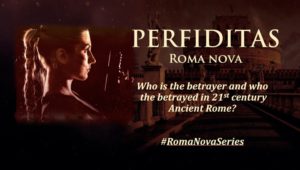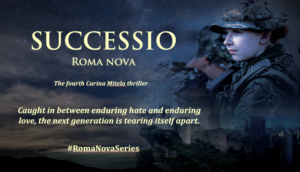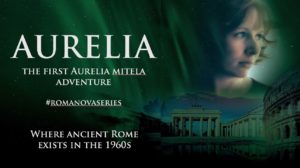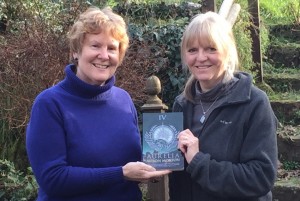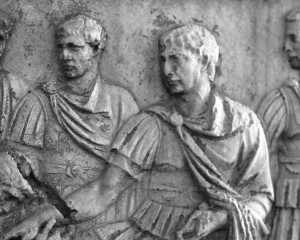 Legate, senate, imperial secretaries, centurion, people’s tribunes, praetor, vigiles? All terms we may know from ancient Rome. What are they doing in the 20th and 21st centuries? Well, they’re used in Roma Nova, the (imaginary) last Roman province in the West that survived into the modern age.
Legate, senate, imperial secretaries, centurion, people’s tribunes, praetor, vigiles? All terms we may know from ancient Rome. What are they doing in the 20th and 21st centuries? Well, they’re used in Roma Nova, the (imaginary) last Roman province in the West that survived into the modern age.
Roma Novans have kept many of these words – they are after all Latin speakers with a strong sense of their cultural identity – but they’ve added new ones and changed the meanings of others in keeping with the age they live in. Here’s a quick and easy guide:
| Word | Old Ancient Roman meaning | Roma Nova meaning |
| Imperatrix | Didn’t exist. ‘Imperator’ was a commander in chief, later a ruler. Roman emperors were called ‘Augustus’ and later their deputies were called Caesars. | (Female) Ruler of Roma Nova |
| Count/Countess, Latin ‘Comes’ | In later antiquity, especially in the Eastern Roman/Byzantine, a ruler’s companion/delegated power holder | Head of one of the Twelve Families who form a support network for the imperatrix |
| Imperial secretary | Powerful functionary serving the emperor; often wielding power in specific areas and most likely freedmen | Senior civil servant in the imperial government |
| Consiliaria (f) Consiliarius (m) |
Councillor, but only male in Ancient Rome as women had no public administrative or political role | Councillor, equivalent to a cabinet minister in the Western sense |
| Quaestor | A Roman magistrate in charge of the pecuniary affairs of a state body or province; also used for quartermaster general | Ditto; the Imperial Quaestor is the budget minister. |
| Praetor | Senior magistrate with nearly consular power; later, more of a senior imperial administrator | Senior judicial officer/senior judge |
| Praetor urbanus | Senior magistrate of the city, with the power to summon the Senate and organize the defence of the city in the event of an attack | Head of Roma Nova judiciary; governs in absence of the imperatrix in tandem with the imperial council |
| Censor | Maintained the census, supervised public morality and oversaw certain aspects of the government’s finances, especially tax | Maintains the census and collects all taxes |
| Senate | Originally an advisory council, later authorised state spending, military campaigns and supervised administration of provinces; could authorise rule by decree and appointment of a dictator, but power declined under the emperors. | Appointed from the ‘great and the good’; later part appointed, part elected |
| Legislative assemblies (Curiate Assembly, Centuriate Assembly, Tribal Assembly, Plebian Council) | Basic functions were to pass laws, elect magistrates, and try judicial cases. Evolved over time; powers were subsumed in a weakened senate under the emperors. | People’s Representatives, elected by universal suffrage of citizens |
| Tribunes (political) |
Tribunes of the Plebs acted as a check on the authority of the senate and the annual magistrates, holding the power of ius intercessionis to intervene on behalf of the plebeians, and veto unfavourable legislation. | Elected by the People’s Representatives as speakers and intercessionaries with the courts, senate and imperatrix. |
| Vigiles | Rome’s firefighters turned night watch. Often ex-slaves/ former legionaries | Standard policing duties up until the Great Rebellion. Re-formed as the custodes |
| Urban Cohorts (cohortes urbanae) |
Their primary role was to police Rome and counteract the roaming mobs and gangs especially during the Republic. The urban cohorts thus acted as a heavy duty police force, including riot control. | Merged with the former vigiles to form the custodes |
| Praetorian Guard | Originally the commander’s then emperor’s personal guard, evolving into elite troops | Praetorians guard the imperatrix, her family, major state institutions and persons; specialist branch (PGSF) acts in special forces role. |
| Patricians | The original ruling families of Ancient Rome and their descendants, roughly equivalent to aristocrats, who exerted influence and occupied senior positions in the senate, military and state machine. | The Twelve Families who founded Roma Nova who are obliged to serve the imperatrix who is in turn obliged to listen to their advice. |
| Centurion | Professional officer of the Roman military forces, very loosely equivalent to junior/middle officer rank of a modern army and with a multi-layered system of progression within the centurion grade. Backbone of the Roman army. Deputy called optio. | Roma Novan centurions are equivalent to senior/staff sergeants; senior centurion equivalent to Warrant OfficerI.
Standard modern military names e.g. captain, major, now apply for higher grades. |
| Legate (military) | General in the Roman army of senatorial status, appointed by the emperor | Senior officer of a military forces unit e.g. PGSF, appointed by imperatrix and confirmed by the senate |
So there you have it, citizens!
Alison Morton is the author of Roma Nova thrillers – INCEPTIO, PERFIDITAS, SUCCESSIO, AURELIA, INSURRECTIO and RETALIO. CARINA, a novella, and ROMA NOVA EXTRA, a collection of short stories, are now available. Audiobooks are available for four of the series. NEXUS, an Aurelia Mitela novella, is now out.
Download ‘Welcome to Roma Nova’, a FREE eBook, as a thank you gift when you sign up to Alison’s monthly email newsletter. You’ll also be first to know about Roma Nova news and book progress before everybody else, and take part in giveaways.





